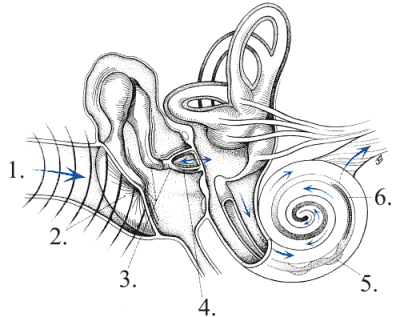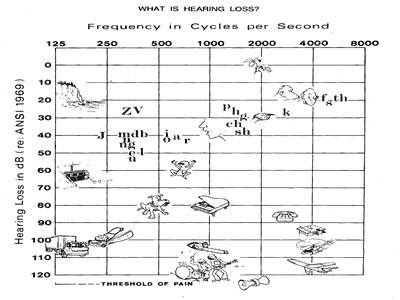
When we hear, sound is first collected
by the outer ear and sent down the ear canal to the eardrum (1).
The sound vibrates the eardrum, which then vibrates the bones
of the middle ear (2-4). Motion of these bones results in movement
of the fluid contained in the snail-shaped cochlea (5). As the
fluid begins to move, the tiny hair cells lining the cochlea
move back and forth to generate an electrical current (6). This
electrical current stimulates the hearing nerve, which carries
the signal to the brain and is interpreted as sound.
The following diagram illustrates some common
sounds and their hearing level:

For more information regarding some specific
causes of hearing loss, click the right arrow below.



